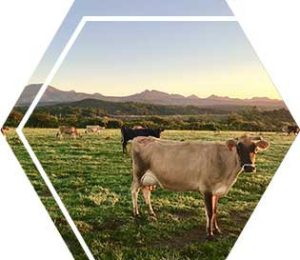
High School, Earth Science
This task focuses on human impacts on earth systems. Throughout the task, students will evaluate the two different grazing techniques as possible strategies to manage natural resources. Students will interpret a model, calculate data, and read an article to gather information to make an informed decision about the best resource management system (ie. grazing technique) to maximize profits and minimize negative impacts to biodiversity.
Three-Dimensional Claim
Use empirical evidence to make and support a claim for the best resource management strategy (ie. grazing technique) based on an evaluation of how two solutions affect biodiversity and profitability.
This task is intended to elicit student learning of the following NGSS elements for each of the three dimensions:
Disciplinary Core Ideas
ESS3.C: Human Impacts on Earth Systems (HS)
ETS1.B: Developing Possible Solutions (HS)
Science and Engineering Practices
Analyzing and Interpreting Data (HS)
Analyze data using tools, technologies, and/or models (e.g., computational, mathematical) in order to make valid and reliable scientific claims or determine an optimal design solution.
Engaging in Argument from Evidence (HS)
Crosscutting Concepts
Cause and Effect (HS)
It’s very expensive to raise beef cattle. With the average animal consuming over twenty pounds of food per day, ranchers need to find an efficient way to raise cattle in their pastures. Some ranchers use rotational grazing during which cattle stay in a smaller area of a pasture. They graze there for a few days then move to a different area of the pasture. Other ranchers use continuous grazing during which the cattle are able to graze across a whole pasture for a longer period of time.
In this task, a rancher is trying to decide whether to use rotational or continuous grazing for their cattle. Both grazing strategies impact how much money the farmer can make along with how well the biodiversity and habitat of the pasture is sustained in the long term. Students will use data to help decide which strategy will be the most beneficial for the farmer while considering the economic and ecological impacts of each resource management system.
